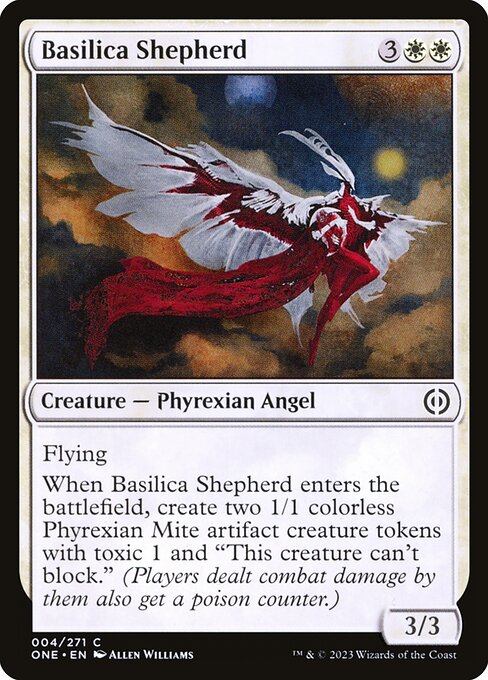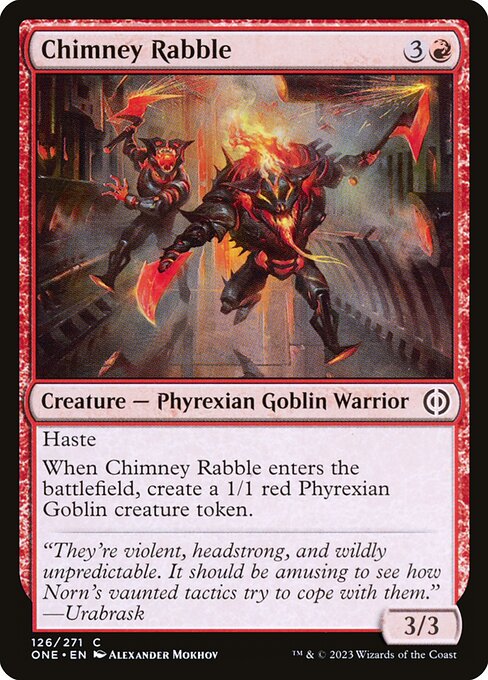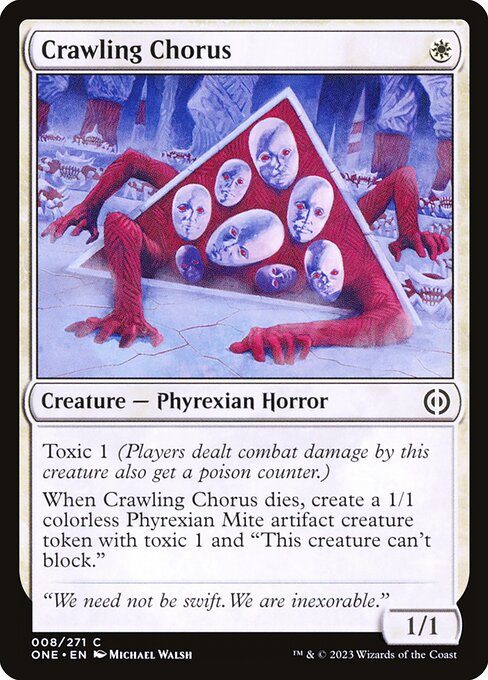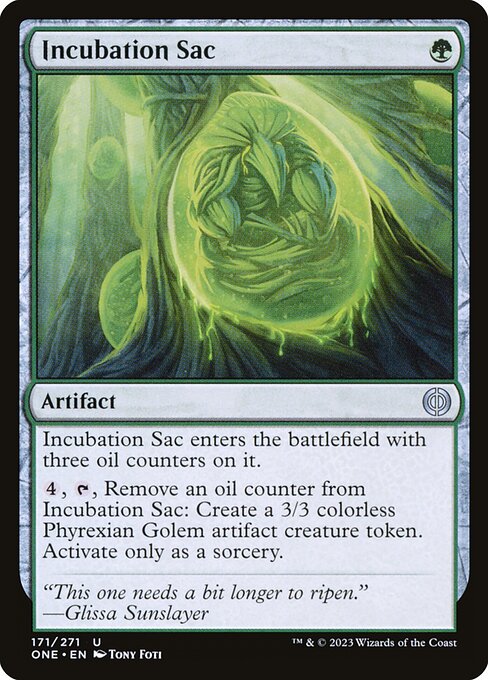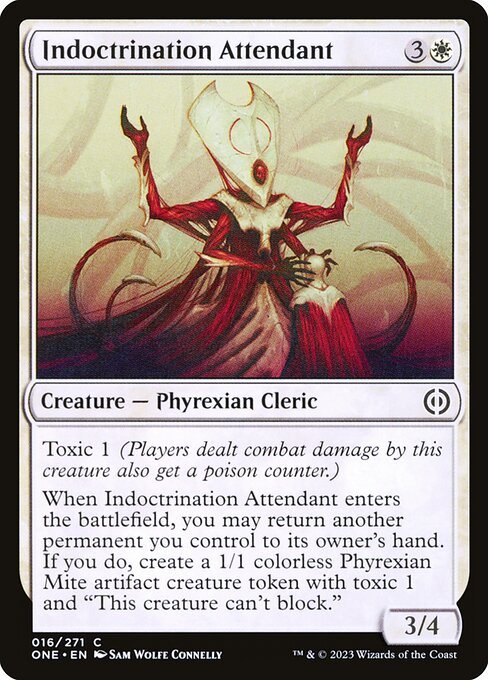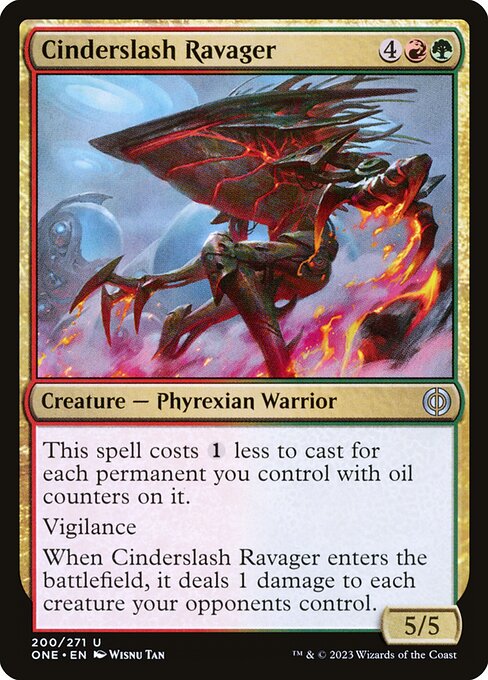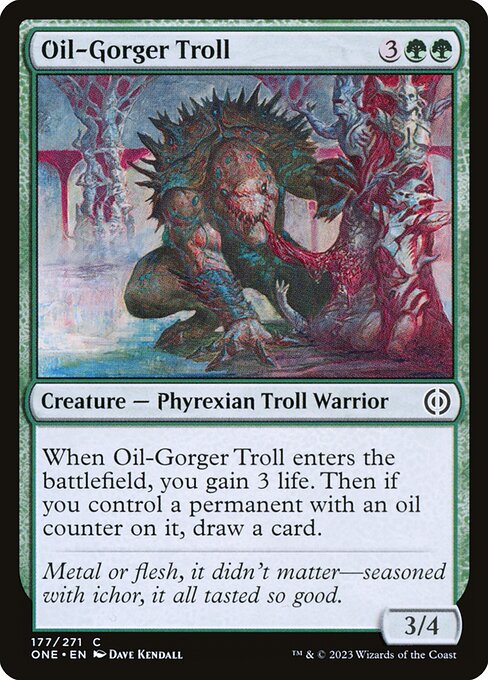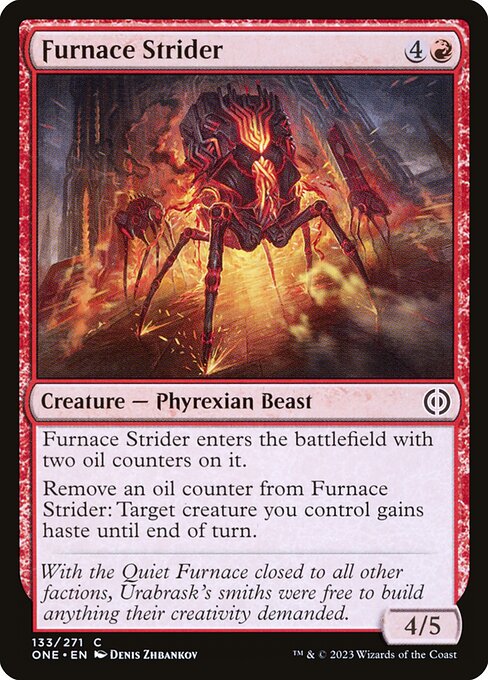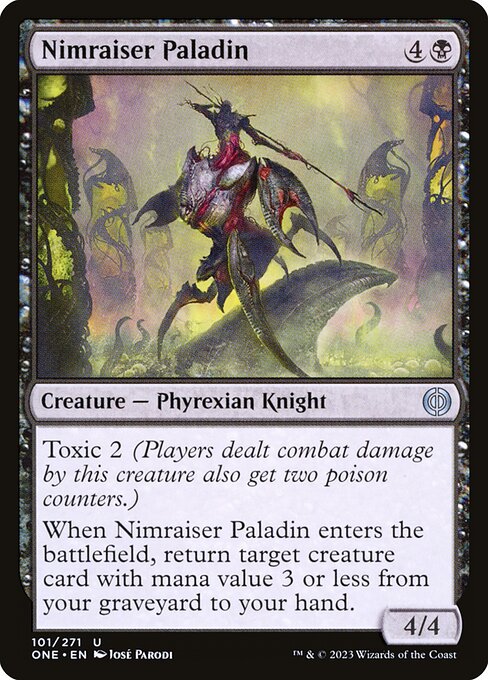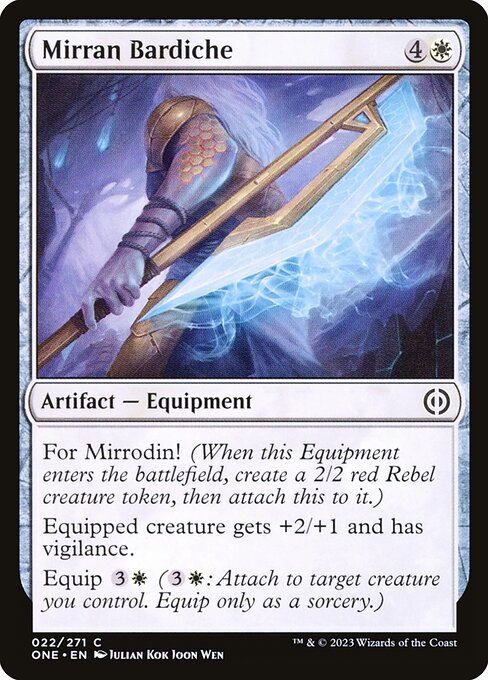Table of Contents
Phyrexia: All Will Be One (ONE) was launched only a few days ago, but is already riddled with controversies. First days were marred by complaints that the format is too fast. What does the data say? Well, wouldn’t it be great to have someone who could go and check.
Too fast format or too fast conclusions?
Shock Results
Oh. Right. That would be me then. So let me tell you a cautionary tale on why you should approach data with extra caution, especially in the early days of the format. Couple of days ago, the one and only Fireshoes (if you don’t – an A+ follow on Twitter) posted a graph from 17Lands.com showing the speed of different formats with ONE being a big outlier.
In both BO1 draft and Sealed ONE games on this graph are much shorter than in any other format. 8.1 turns in BO! and 8.6 in Sealed are miles away from average format which is around 9.4 and 9.5 respectively. BO1 looks even faster than a notoriously fast Arena Cube.
What was even more worrying on that graph is that the format had a record breaking advantage of being on the play. Arena players won 56% of the games on the play, and as a result won only 44% of the games on the draw. That is a worrying number. Even notoriously snowballs Baldur’s Gate set had that gap at only 53-47, and last sets were closer to 51-49 or 52-48 split.
Trust Issues
And this is the moment where being used to looking at data came in handy. Instead of shock and outrage, my first reaction was disbelief. It is almost an instinct that when you see some extraordinary data, you want to make sure you double-triple verify it. And so I did. I reproduced(ish) the graph but added all the formats.

Results were, obviously, very similar. But I noticed something that shouldn’t have been there. Quick Draft. Arena doesn’t let you play Quick Draft in a newly released format, instead reserving the first couple of weeks for Sealed. Why is it on the graph then? And why is there no BO3 draft? That one is available from day 1?
The conclusion was relatively easy. The data on that graph is all the data from before the release, from the Early Access games, where BO3 was not available and BO1 was. Comparing normal games with EA is not a fair comparison. EA means people play for free, with incentives of doing something sparkling for the chat in order to get clips out, or gather some much needed subs.
Despite theoretical ban on conceding, it still happens a lot as players prefer to end a game they are unlikely to win and jam one more draft instead, sample of players is particular, and probably many other key differences. This made me very cautious looking at this initial graph.
Updating Data
However, I didn’t have to wait much longer to get access to better numbers. Just a day in, data from 17Lands was updated by day 1. I took a screenshot from then, and got a slightly differently looking graph.

You can see the BO3 appearing, which means the post-launch numbers were included. QD didn’t move from where it was, meaning no new EA data was added. In BO1, the games take a bit more time – 8.4 turns from 8.1, also the colossal on play advantage shrunk by a half, from 56-44 to just under 53-47.
This is still both fast games and large on play advantage, but no longer is it way beyond what other sets are. BO3 data, quite typically shows that the games are a bit faster than in BO1, a slightly counterintuitive trend I will need to explore one day. 8.2 is very fast games. But they do not translate to a big on play advantage, only 51.5% to 48.5%.
And this is the most striking finding in ONE that I only can speculate about so far. The speed of the format is not translating into a big on play advantage. This is, so far, unlike any other format in recent years.
Outlier

And the mismatch is quite large. Again I want to hammer home the message, that data for all other formats on those graphs are taken from the end of the format, and here we have ONE data after just one day, which might explain the difference in some way. If the format would be truly amazingly fast, you would expect that the points related to ONE would be much more to the right on the graphs. But they are not. That, most likely, means that the format is much slower than the data suggests and the low game duration is not because of the generic speed of the format, but for some other reason.
My current hypothesis is, a large chunk of players build decks incompatible with the format. This makes them lose fast, independently if they were on the play or draw, dragging the game length down, but not impacting the “on play advantage” metric. If that is true, over time we should see the points linked to ONE on the graph moving up, closer to the trend line, as decks become more streamlined and competitive. Again, the data is in the early days, so part of this peculiar result might be due to small sample size.
Alternative is, the format is a rock-paper-scissors, so some decks just lose to a type of a deck and win with another type etc. This would mean that some decks are non-competitive against an archetype, independent of the quality of a build, rather than because of the drafters misunderstanding of the format, meaning they lose on play or draw and do it fast. If that is the case, ONE should stay an outlier till the end of the format.
No Draw-Go
There is a different way of looking at the speed of the format. Looking at the card performance data, you can calculate in what percentage of games do you see each card. The longer the games, but also the more prevalent the card draw, the more cards you draw. That means that in slow formats you will see each card more times in your hand. I plotted the data for each card in ONE. Each dot represents one card.

The values are between 35% and 45% for most cards. And that is actually pretty low. Confirming that this is both a fast format, but also suggesting that card draw is not particularly prevalent. And that may be what puts people off the gameplay. I somehow find it hard to believe that it is only the speed. Lightning-fast Cube draft is one of the most beloved formats, because in those few turns a lot happens. ONE misfires for some because their versions of decks don’t do enough to bring them that adrenaline rush.

Other formats in recent years allowed you to see much more of your deck: around 44% compared to 40% in ONE.
Solutions
OK, it is all well that I told you that the format speed is fast, that large chunk of decks are possibly badly tuned and that is why game length doesn’t correlate well with the on play advantage. But what are the solutions? the data is still preliminary, so I won’t dive too deep into it but looking at card win rates you see some trends.
Firstly, cards that make multiple creatures are premium. Maybe if you draw fewer cards across games it is important to make the ones you draw worth the effort. All of the cards below are overperforming their general expectations.
Multiple bodies ensure you some sort of board presence and that seems to be key for the format. Data points that being able to put bodies on board is a good idea and you should definitely make sure that you have a creature available to play on turn 2. This focus on bodies means that, contrary to my predictions before the format, combat tricks are not performing well. Drawing 2 tricks and no creatures early is close to game over. And not all the board presence is good. Skullbombs, for example, generally underperform. They are not unplayable, but maybe you should not think of them as auto-includes.
So, 2 drops are essential, surely that means 5-drops are unplayable? Well, not exactly according to data. This format in many archetypes seems to promote, what I call a U-shaped mana curve. What do I mean by that? You want to have a lot of early drops, but you also want to have top end, and not that much in-between. Good 5- and 6- drop do very well in terms of their GiH win rate. Below are some potential overperformers.
Format is still young and immature, but hopefully those early data might be useful in forming a better understanding of the format. As the drafting matures over the next week data will become more and more reliable and we should be able to get more answers. Till now it is still time to experiment with the cards and, most importantly, have some fun!
Meanwhile this article is based on my seminar series, Magic Numbers. If you are interested in a more detailed video version with extra topics, make sure to give it a watch.
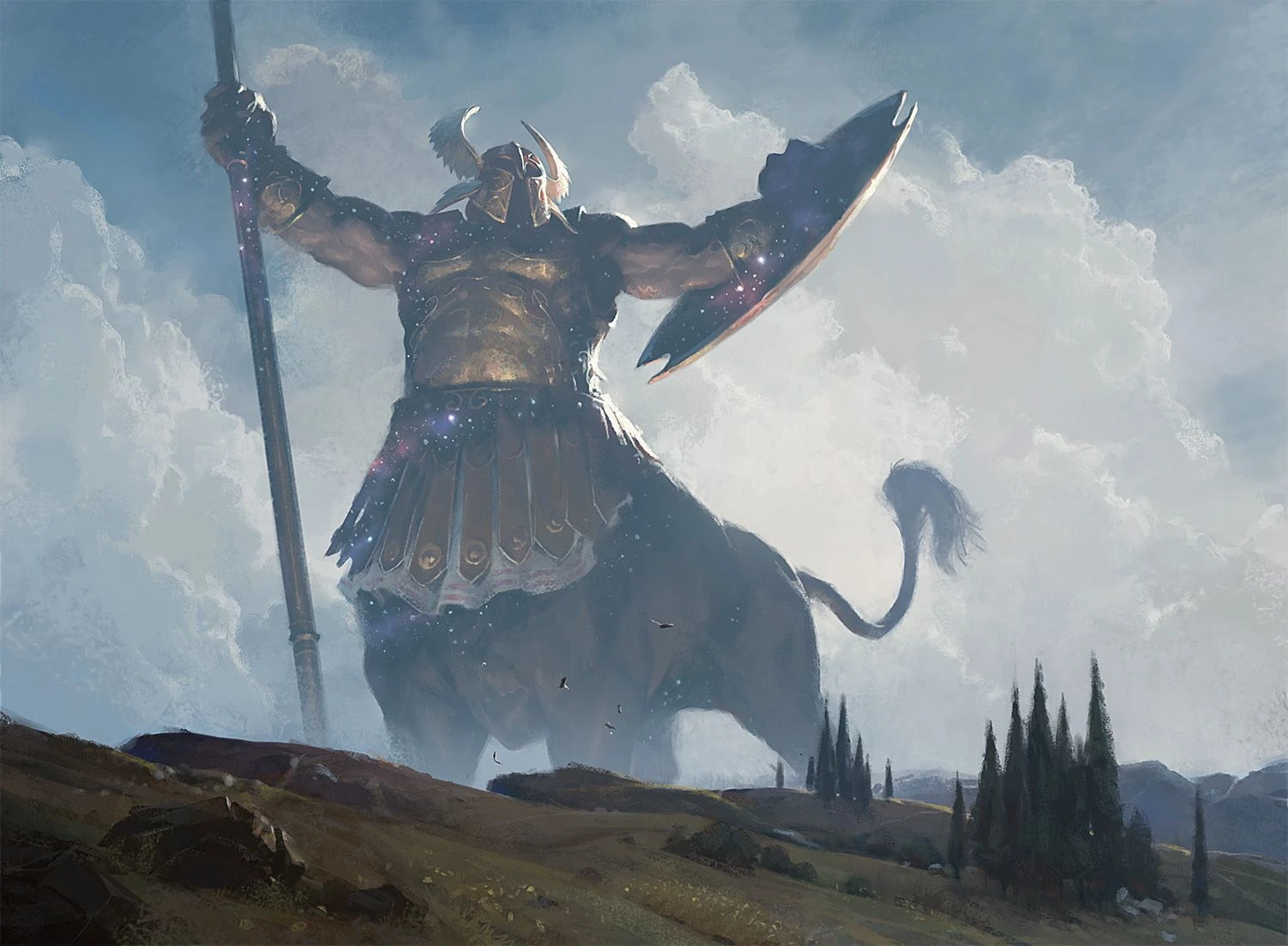
Premium
Enjoy our content? Wish to support our work? Join our Premium community, get access to exclusive content, remove all advertisements, and more!
- No ads: Browse the entire website ad-free, both display and video.
- Exclusive Content: Instant access to all exclusive articles only for Premium members, at your fingertips.
- Support: All your contributions get directly reinvested into the website to increase your viewing experience!
- Discord: Join our Discord server, claim your Premium role and gain access to exclusive channels where you can learn in real time!
- Special offer: For a limited time, use coupon code L95WR9JOWV to get 50% off the Annual plan!


























